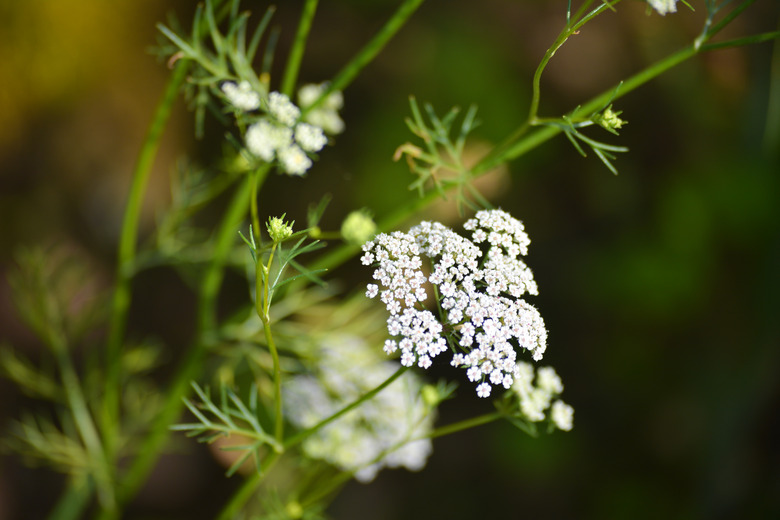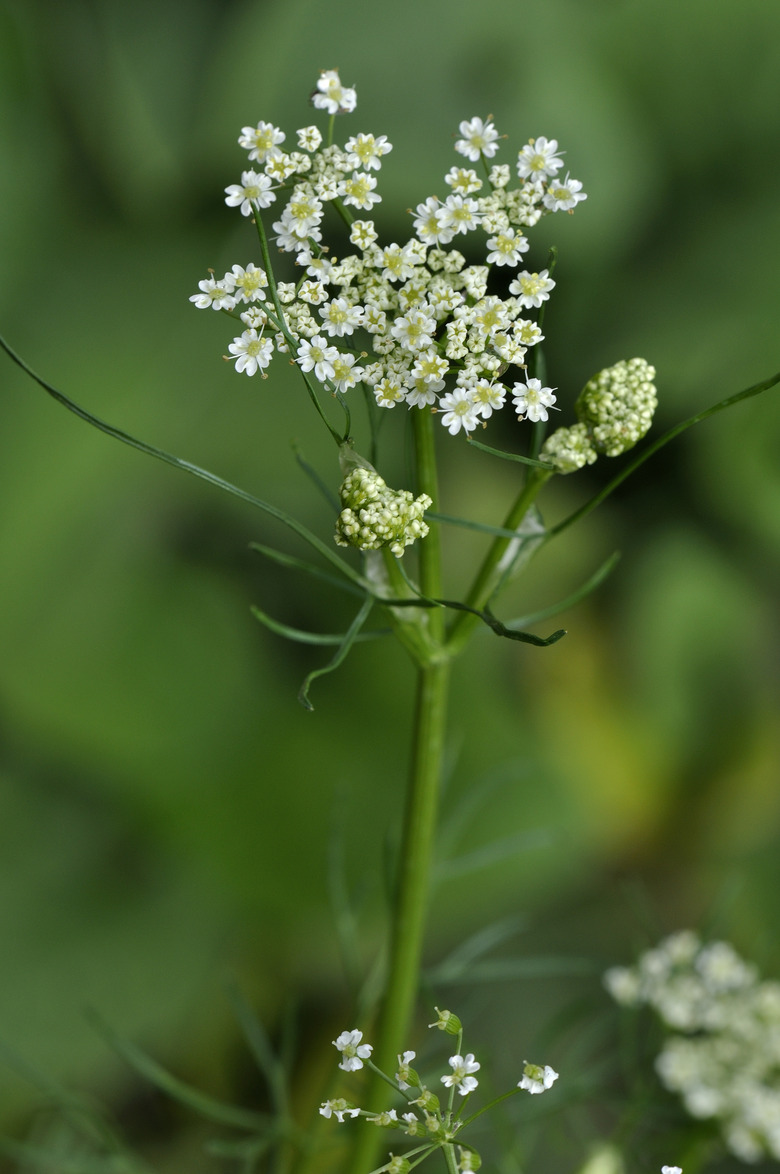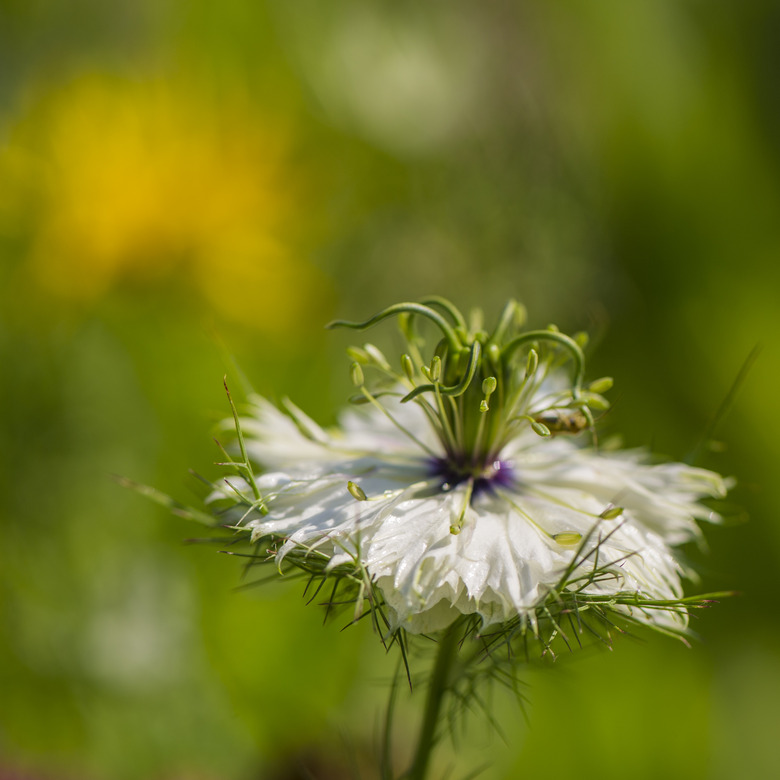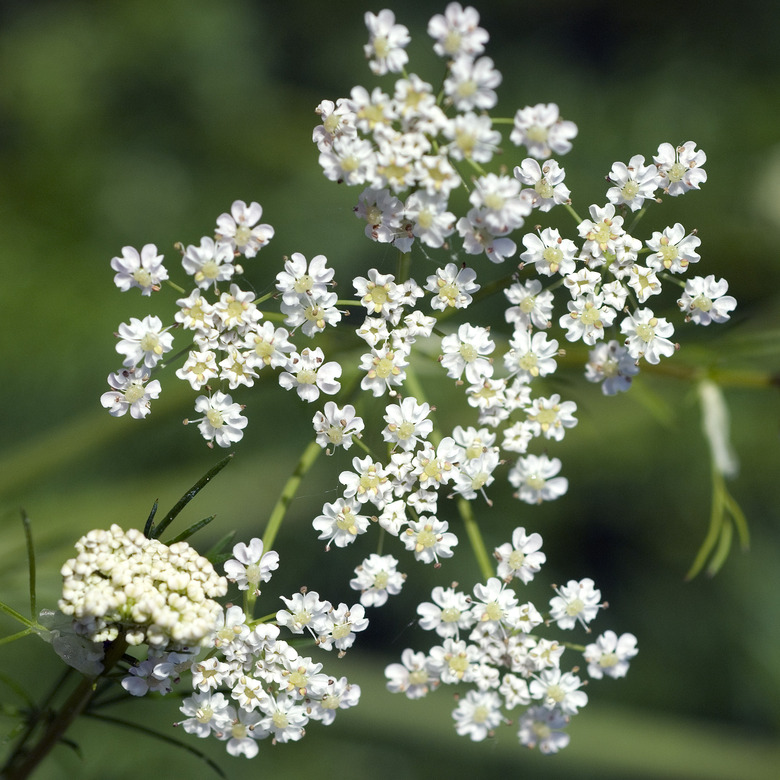How To Grow Cumin
We may receive a commission on purchases made from links.
A member of the parsley family (Apiaceae), cumin (Cuminum cyminum) is an herbaceous annual plant grown primarily for its seeds. The use of cumin as a spice is even documented in the Old Testament, where it is referred to as "cummin." For example, a passage in Isaiah (28:27) describes the process of harvesting the seeds by beating the dry plants with a stick, a process still used by some people today. A native of Egypt and the Mediterranean, cumin is a traditional staple in Middle Eastern and Asian cooking, and its flavor is so distinctive that some people sprinkle ground cumin on their food in the same way that others use black pepper.
A savory mainstay in Indian dishes without which the taste of curries and samosas wouldn't be the same, cumin was introduced to North America by the Spanish explorers, and today it's as common as cilantro in Mexican and other Latin American recipes. Cumin seeds look like caraway seeds, but they're spicier, and besides their culinary uses, they have health benefits recognized particularly by Ayurvedic health practitioners. Cumin can ease gas and bloating, improve digestion, stimulate the appetite, enrich the blood with iron and act as an anti-oxidant.
The cumin plant grows 1 to 2 feet tall and has long, wispy leaves that are similar to dill. Small white and yellow flowers appear in clusters in the middle of summer, and they are replaced by clusters of seeds at the end of the long growing season, which lasts about four months. Although you can do as Isaiah did and beat the plants with a stick to knock off the seeds, there are easier methods to harvest them. They are ready for use as soon as they have been dried.
Best Uses for Cumin
Best Uses for Cumin
Cumin is a great addition to an herb garden, but not many people grow it, partly owing to its long growing season and to a belief that it is a tropical plant. In fact, it can be grown in zones as far north as zone 5, although the seeds may have to be started indoors to compensate for the short summers. The wispy annual won't dominate the garden, and there are good reasons for including it in the garden beyond the collection of fragrant seeds.
For one thing, all parts of the plant are edible, and the leaves make tasty additions to salads. One of cumin's most appealing characteristics, however, is its ability to attract beneficial insects, such as predator wasps and ladybugs, that help keep neighboring plants free of caterpillars and aphids. Cumin is good for companion planting along with cabbage, potatoes and cucumbers, which are particularly susceptible to caterpillar damage, and it grows well in containers, so you can move it around the garden as needed as long as you keep it in a sunny place.
Each cumin plant produces only a small number of seeds, so if you're growing it for seeds, you need a large number of plants. Consider planting clumps throughout the garden so all your vegetables will benefit from the helpful insects it attracts.
How to Grow Cumin
How to Grow Cumin
- Common Name: Cumin
- Botanical Name: Cuminum cyminum
- When to Plant: Wait until outside temperatures warm to 60 degrees Fahrenheit
- USDA Zones: Grown as an annual in zones 5-10
- Sun Exposure: Full sun
- Soil Type: Neutral to slightly alkaline sandy loam with a pH between 7.0 and 7.5
- When it's in Trouble: Seedlings may succumb to blight if planted too early
- When it's Thriving: Plants grow tall and produce abundant flowers and seeds
Starting Cumin From Seed
You can sow dried cumin seeds that you grew yourself from heirloom, nonhybrid seeds, which you can purchase online or from a garden supplier. Soak them for eight hours prior to planting to ensure germination. You can sow them outdoors directly in the garden but only when the temperature doesn't fall below 60 degrees. Because cumin seedlings take four months to mature and produce seeds, you may have to start them indoors to ensure a harvest before the autumn cold sets in, and if you do that, start them four to eight weeks before the last frost date.
Sow the seeds 1/4 inch deep in the garden or in containers filled with potting soil and keep the soil moist until the sprouts appear, which takes about 14 days. Seedlings started indoors are ready for transplanting when they are about 2 inches tall. Because cumin roots don't tolerate transplanting well, it's best to start indoor seeds in biodegradable pots that you can bury to minimize root shock during transplanting.
When sowing seeds outdoors, space them 4 to 8 inches apart. You can grow them in rows spaced 18 inches apart, but the spindly plants can support each other better if you grow them in clumps instead. Sow a lot of seeds if you want to harvest seeds from your plants because the yield from each plant is relatively small.
Starting Cumin From a Seedling
When transplanting seedlings from indoors, wait one or two weeks after the last frost date when the outside temperature is a consistent 60 degrees or higher. Cumin likes full sun and hot weather, so choose a bright, sunny part of the garden with loamy, well-draining soil. The seedlings need regular watering to prevent the soil from drying out but don't overwater because the roots succumb easily to root rot. Space the seedlings 4 inches apart in rows spaced 18 inches or grow them in clusters so they can support each other and prevent spilling seed onto the ground.
In What Zone Does Cumin Grow Best?
In What Zone Does Cumin Grow Best?
A hot-weather plant that doesn't tolerate frost or cold temperatures, cumin doesn't adapt well to northern climates with short growing seasons. In zone 5, the northern edge of its growing range, you can only grow cumin that has been started indoors, and because cumin plants are so sensitive to transplanting, you may have a harder time getting enough successful seedlings for a good seed crop. Increase your chances by sowing four to seven seeds in the same hole and thinning the weaker starts when they emerge. In zones 9 and 10 at the southern edge of its range, you don't have to worry about any of this because you can sow the seeds outdoors as soon as it's warm enough.
When Should You Plant Cumin?
When Should You Plant Cumin?
Because cumin has such a long growing season, you want to get seeds or seedlings into the ground as soon as you can in the spring to ensure a fall harvest. If you live in a northern climate, that may mean taking a chance and planting one week after the last frost rather than waiting for two weeks. It may help to mulch around the plantings to keep the soil warm. Avoid overwatering because wet soil tends to be cooler.
If outside temperatures are warm enough to allow seeds to be sown outdoors by mid-April and seedlings to be planted by mid-May, the plants are very likely to yield a harvest before the cold fall weather kills them.
Soil, Sunlight and Water Recommendations for Cumin
Soil, Sunlight and Water Recommendations for Cumin
Nutrient-rich soil is definitely a plus but not a hard-and-fast requirement because cumin will grow in almost any loamy, well-draining soil. The addition of compost tea at planting time and once or twice during the growing season is a good way to add nutrients without overdoing it. The soil should be neutral to alkaline with a pH between 7.0 and 7.5, so it may be necessary to work in some lime before planting if the soil is acidic.
Cumin loves to be in full sun, and the longer it receives sunlight each day, the better. It has moderate watering requirements and can usually get by with what falls from the sky, although you should water if the soil dries out. Don't overwater, though, or the roots may rot. Mulching around each plant with straw or leaves is a better way to keep moisture in the soil during a dry spell than watering too often.
How to Propagate Cumin
How to Propagate Cumin
If you have a handful of cumin seeds of unknown origin, you can go ahead and sow some of them, but if they are hybrid seeds, they probably won't grow. The best seeds are obtained by open-pollinated heirloom plants, which typically means allowing bees and other pollinators to do the work. If you're interested in creating a seed bank for future plantings, grow your first crop from heirloom seeds, and all subsequent crops will be direct descendants with the same characteristics.
How to Harvest Cumin
How to Harvest Cumin
You can collect the seeds by following the advice given in the Bible and thwacking the plants with a stick, but a more efficient method is to cut five or six plants, enclose the seed pods in a paper bag with a few holes to allow air to circulate and hang them upside down. The seed pods will dry out thoroughly in seven to 10 days, after which you can dislodge them by shaking the bag or brushing the pods with your fingers. When you put them in an airtight container and store them in a cool, dry location out of the sun, they'll keep for two years.
Common Pests and Other Problems for Cumin
Common Pests and Other Problems for Cumin
The pests that attack cumin are also prey for the beneficial insects the plant attracts, particularly ladybugs, so infestations may not be as severe as they are on other plants. When one does occur, you can always introduce more ladybugs to the garden, which will hopefully gravitate to the cumin plants. The pests are the same ones you commonly find attacking most other leafy vegetables and herbs, including:
- Aphids, the juice suckers that congregate on the underside of leaves and deposit sticky honeydew. The insects spread disease, and honeydew promotes the growth of sooty mold. You can often wash them off the leaves with a jet of water or kill them with insecticidal soap.
- Thrips are also tiny, and they also suck juices from the leaves, causing discoloration and eventual wilting. Use insecticidal soap or neem oil to control them.
- Cutworms are caterpillars that live in the soil and attack young plants at night, severing the stems and sometimes decimating entire plants. You can usually keep them away by putting collars around the young plants. A toilet paper tube works well for this. Sprinkling diatomaceous earth on the ground around each plant can also be effective.
Common Diseases for Cumin
Common Diseases for Cumin
Cumin is not susceptible to many diseases, which is one reason it's considered so easy to grow. Typically most experts mention only three, but there are four if you count damping off, which is caused by a pathogen that lives in infected seeds and soil and is activated by excessive moisture in the soil. If you use good-quality seeds and proper growing techniques, damping off shouldn't be a problem. The other three common diseases are:
- Powdery mildew, which appears as a whitish deposit on the tops of leaves. It occurs when plants are too close together in cool, humid conditions, and it can inhibit seed formation. You can treat it with horticultural oil.
- Alternaria blight typically occurs during the flowering stage when conditions are too humid, and it can also inhibit seed formation. Avoid overwatering and when you do water, avoid getting the leaves wet.
- Fusarium wilt is a fungal disease that lives in the soil and seeds and causes the leaves to turn yellow and wilt, and the plants often die. This disease has no cure, and infected plants should be removed. Prevent this disease by harvesting seeds as soon as they ripen.
References
- Bespoke Spices: The Long and Fascinating History of Cumin – From the Bible to the Ottoman Turks
- Gardener's Path: How to Grow and Care For Cumin in Your Garden
- The Homestead Garden: How to Grow Cumin
- Heirloom Organics: How to Grow Cumin | Guide to Growing Cumin
- Vikaspedia: Cumin: Insect and Nematode Pests Management
- Vikaspedia: Cumin: Diseases and Symptoms
- Organic Consumers Association: How to Grow Cumin



